How to Manage Time for Regular Painting
Are you feeling the itch to paint but struggling to find the time? You're not alone! Many aspiring artists find it challenging to balance their creative passions with everyday responsibilities. But don't worry—this article is here to help you discover effective strategies for incorporating regular painting into your busy schedule. By managing your time wisely, you can unleash your creativity without sacrificing your daily commitments.
First things first, let’s talk about the importance of setting clear goals. Establishing specific painting objectives can act as a roadmap for your artistic journey. Whether you want to complete a canvas every month or simply dedicate an hour each week to paint, having these goals in mind can help prioritize your time. Think of it like planning a road trip; without a destination, you might just end up wandering aimlessly!
When you set clear and achievable goals, you create a sense of direction and motivation. These objectives can be short-term, like finishing a piece for an upcoming exhibition, or long-term, such as developing a unique painting style. The key is to write them down and keep them visible—maybe on a bulletin board or in your planner. This way, every time you glance at them, you’ll be reminded of your passion and the importance of making time for it.
Next up, let’s discuss the significance of having a dedicated painting space. Imagine walking into a room that’s solely designed for your creative endeavors—how inspiring would that be? A well-organized and vibrant painting area can enhance your focus and efficiency. You don’t need a large studio; even a small corner of your home can become your artistic sanctuary. Fill it with your favorite art supplies, inspirational quotes, and maybe even some plants to keep the energy flowing.
Now that you have your space, it’s time to tackle distractions. We live in a world filled with interruptions, from buzzing phones to the temptation of social media. To improve your productivity, consider implementing techniques like turning off notifications or using noise-canceling headphones. Create a bubble of creativity where you can immerse yourself in your work without the outside world pulling you away.
Another effective strategy is to implement time blocks for your painting sessions. Think of this as setting an appointment with yourself—one that you absolutely cannot miss! By allocating specific periods solely for painting, you ensure consistent practice without interruptions. For example, you could block out two hours every Saturday morning. Treat this time as sacred; no chores or errands allowed!
Moreover, consider integrating painting into your daily routines. This can transform painting from a sporadic hobby into a regular habit. Perhaps you can use your lunch break to sketch or unwind in the evening with a quick paint session. By weaving painting into the fabric of your day, it becomes less of a chore and more of a joyful ritual.
But where does the inspiration come from? Regularly seeking inspiration can rejuvenate your painting practice. Explore various sources, such as nature, art galleries, or online platforms. You might find that a walk in the park or browsing through Pinterest can spark new ideas and ignite your creativity. Keep a journal to jot down your thoughts and inspirations; you never know when a brilliant idea might strike!
Committing to a painting schedule can help ensure consistency. Whether it’s weekly or bi-weekly, having regular sessions allows you to track your progress and stay engaged with your art. You might want to create a simple calendar specifically for your painting sessions. It can be digital or a physical planner—whatever works best for you!
In today’s digital age, various tools and apps can assist in time management for painting. Consider using calendars, reminders, or project management apps to keep your painting goals on track. These tools can help you stay organized and remind you when it’s time to pick up that brush again. It's like having a personal assistant dedicated to your artistic pursuits!
Finally, don’t forget to take time to reflect on your painting journey. Regularly assessing your work can provide insight into your growth as an artist. Ask yourself questions like, “What have I learned?” or “What techniques do I want to explore next?” This reflection not only helps identify areas for improvement but also serves as motivation to continue your practice.
- How much time should I dedicate to painting each week?
It varies for everyone! Start with a realistic goal, like one or two hours a week, and adjust as you find your rhythm. - What if I feel uninspired?
Take a break! Sometimes stepping away for a bit can help clear your mind. Explore new environments or activities to reignite your creativity. - Can I paint with kids around?
Absolutely! Involve them in the process or set up a designated time when they’re occupied. Painting can be a great family activity too!
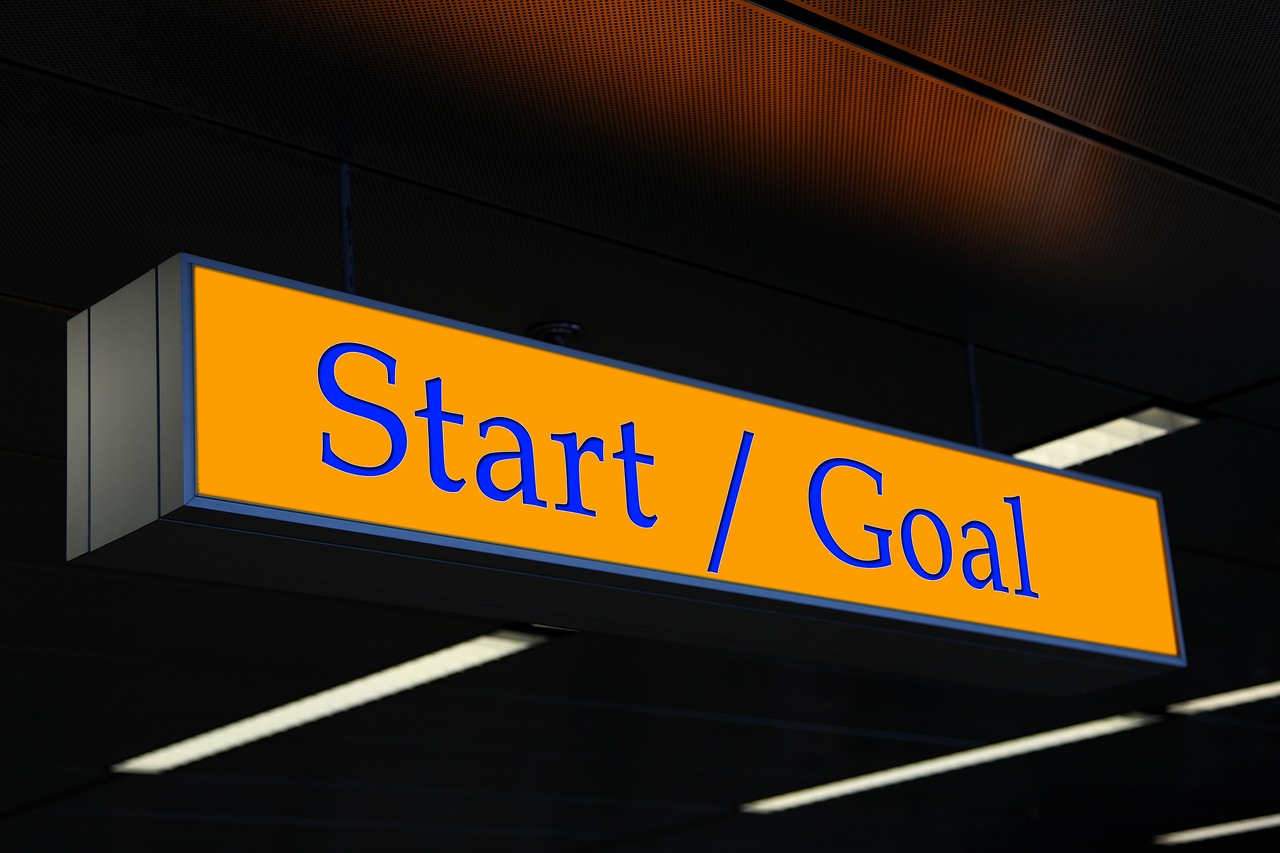
Setting Clear Goals
Establishing specific painting goals is like drawing a roadmap for your creative journey. Without clear objectives, it’s easy to feel lost or overwhelmed by the vast possibilities of art. Think of your goals as the compass that guides you through the wilderness of paint, canvas, and inspiration. They can be categorized into short-term and long-term objectives, each serving its purpose in enhancing your painting practice.
Short-term goals might include finishing a piece by the end of the week or experimenting with a new technique each month. These smaller milestones can provide a sense of accomplishment and keep your motivation high. On the other hand, long-term goals could involve mastering a specific style, preparing for an exhibition, or even developing a comprehensive portfolio over the next year. By setting these objectives, you create a structure that can help you prioritize your time and resources effectively.
To make your goals even more impactful, consider using the SMART criteria when defining them. This means your goals should be:
| Criteria | Description |
|---|---|
| Specific | Your goal should be clear and specific, answering the questions of what, why, and how. |
| Measurable | Include criteria to measure your progress and success. |
| Achievable | Ensure that your goals are realistic and attainable. |
| Relevant | Your goals should matter to you and align with your broader artistic aspirations. |
| Time-bound | Set a deadline for your goals to create a sense of urgency. |
By following this framework, you not only clarify what you want to achieve but also enhance your chances of success. Imagine waking up each day with a clear vision of what you want to create; it’s like having a personal cheerleader urging you forward! Additionally, writing down your goals can further solidify your commitment. Whether it’s on a sticky note on your easel or in a dedicated journal, seeing your objectives in writing can serve as a constant reminder of your artistic aspirations.
As you embark on this journey, remember that flexibility is key. Life can throw unexpected challenges your way, and sometimes your goals may need to be adjusted. Embrace this adaptability as part of the creative process. Celebrate your progress, no matter how small, and don’t hesitate to reassess your goals as you evolve as an artist. After all, the beauty of painting lies not just in the finished piece but in the growth and discovery that happens along the way.

Creating a Dedicated Space
When it comes to painting, having the right environment can make all the difference. A dedicated painting space is not just a luxury; it’s a necessity for anyone serious about their art. Imagine trying to create a masterpiece in the middle of chaos—distractions everywhere, clutter surrounding you, and your mind racing with thoughts of unfinished chores. Sounds frustrating, right? By carving out a specific area in your home for painting, you’re not just organizing your physical space, but also creating a mental sanctuary that encourages creativity.
Your dedicated space should be more than just a corner with a canvas and some brushes. It should be an inspiring zone where you feel comfortable and motivated to express yourself. Think about the elements that make you feel good while you create. Is it natural light pouring in through a window? Or perhaps it’s the smell of paint and turpentine? Whatever it is, try to incorporate those elements into your space. A few simple touches can transform an ordinary area into a creative haven.
Consider the following aspects when setting up your painting space:
- Lighting: Good lighting is crucial. Natural light is ideal, but if that’s not possible, invest in some quality lamps that mimic daylight.
- Storage: Keep your supplies organized. Use shelves, drawers, or even rolling carts to store your paints, brushes, canvases, and other materials. This not only keeps your space tidy but also makes it easier to grab what you need.
- Comfort: Make sure your chair and workspace are comfortable. You’ll be spending a lot of time here, so it’s worth investing in a good chair that supports your back.
Furthermore, adding personal touches can greatly enhance your creative environment. Hang up your favorite art pieces, display inspirational quotes, or even keep a mood board that reflects your artistic vision. All of these elements can serve as daily reminders of why you love to paint and can spark new ideas when you’re feeling stuck.
Don’t forget about the importance of cleanliness in your dedicated space. A cluttered area can lead to a cluttered mind. Make it a habit to clean up after each session. This not only prepares your space for the next time you paint but also allows you to reflect on what you’ve created. It’s like wiping the slate clean, making room for fresh ideas and new projects.
In summary, creating a dedicated painting space is about more than just physical space; it’s about fostering an environment that nurtures your creativity. By paying attention to the details—lighting, organization, comfort, and inspiration—you can build a sanctuary that invites you to paint regularly. So, take a moment to evaluate your current painting situation. What changes can you make to transform it into a space that excites and motivates you? Your next masterpiece awaits!
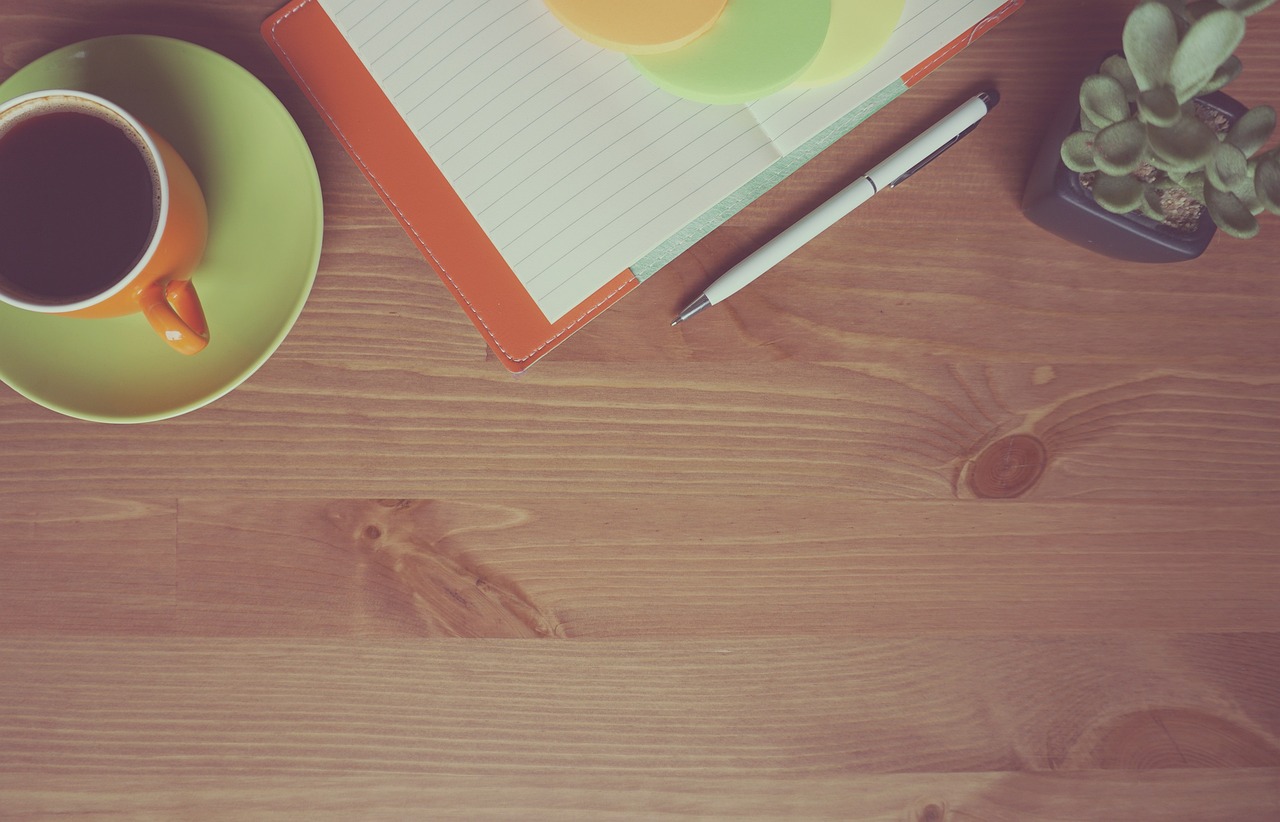
Minimizing Distractions
When it comes to painting, distractions can be the sneaky little gremlins that steal your creative time. Imagine you're all set up, paintbrush in hand, and just as you begin to immerse yourself in your masterpiece, your phone buzzes with a notification. Suddenly, you're pulled into a rabbit hole of social media, and your painting session dissipates like a mist in the morning sun. To truly embrace your artistic journey, it’s essential to identify and eliminate these distractions.
First off, consider creating a distraction-free zone. This doesn’t mean you have to turn your entire house upside down; rather, find a spot where you can paint without interruptions. A tidy, organized space can significantly enhance your focus. You might want to keep your painting area stocked with all the supplies you need, so you won’t need to leave to grab something, which can lead to other distractions.
Another effective strategy is to turn off notifications on your devices. Yes, I know it sounds like a small step, but it can have a monumental impact on your concentration. By silencing those constant pings, you allow your mind to fully engage with your artwork. If you find it hard to resist the lure of your phone, consider using noise-canceling headphones or playing some ambient music. This can create a cocoon of sound that shields you from external interruptions and helps you dive deeper into your creative flow.
Additionally, you might want to set specific times for painting. By allocating dedicated time blocks, you create a routine that signals to your brain that it’s time to focus. You could even use a timer to help you stay on track. For instance, try the Pomodoro Technique, where you work for 25 minutes and then take a 5-minute break. This not only keeps your mind fresh but also allows you to manage your time effectively while minimizing distractions.
Finally, don’t underestimate the power of a good old-fashioned to-do list. Jot down what you want to accomplish during your painting session before you start. This simple act can help keep you focused and prevent your mind from wandering. Just remember, the goal is to enjoy your painting experience, so find what works best for you and stick to it!
- How can I create a distraction-free painting environment?
Start by choosing a quiet space, turn off notifications on your devices, and keep your painting supplies organized and within reach. - What techniques can I use to stay focused while painting?
Consider using noise-canceling headphones, playing ambient music, or setting specific time blocks for painting sessions to maintain your concentration. - How often should I paint to improve my skills?
Consistency is key; try to schedule regular painting sessions, whether it's weekly or bi-weekly, to track your progress and stay engaged with your art.
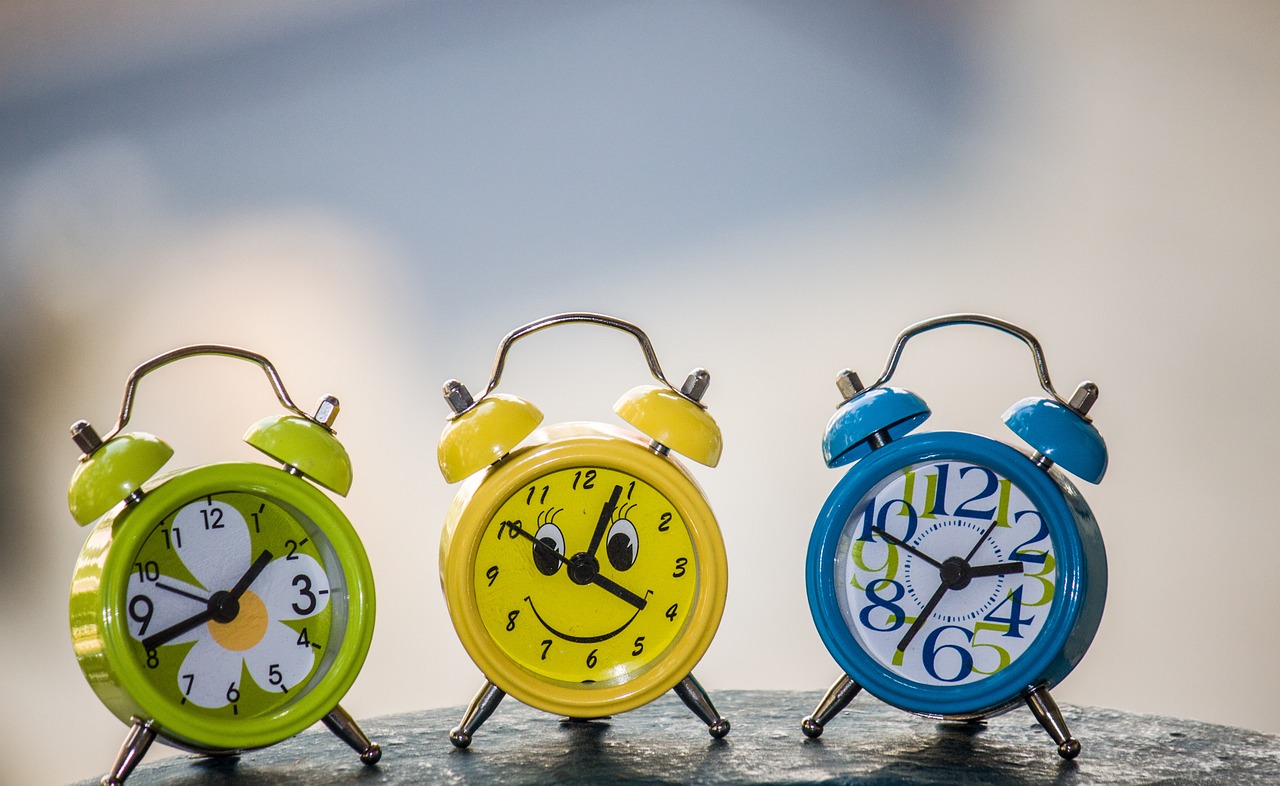
Utilizing Time Blocks
Have you ever felt like there just aren't enough hours in the day to indulge in your passion for painting? You're not alone! Many aspiring artists struggle to find the time amidst their busy lives. One effective strategy to tackle this challenge is by . This method involves setting aside specific periods dedicated solely to your painting practice, allowing you to immerse yourself in creativity without the constant interruptions of daily responsibilities.
Imagine this: you wake up in the morning, and instead of feeling overwhelmed by your to-do list, you have a clear plan for the day. You know that from 4 PM to 6 PM, it's your sacred painting time. By compartmentalizing your schedule, you can focus entirely on your art, free from distractions. This structured approach not only enhances your productivity but also transforms your painting sessions into something you genuinely look forward to.
To get started with time blocking, consider the following steps:
- Identify Your Peak Hours: Everyone has certain times of the day when they feel most creative and energized. Is it early morning, late afternoon, or perhaps even late at night? Pinpoint these peak hours and schedule your painting sessions accordingly.
- Set Clear Boundaries: When you block out time for painting, ensure that you treat it like an important meeting. Turn off distractions, such as your phone notifications or TV, and create an environment conducive to creativity.
- Be Flexible: Life happens! If something comes up and you can't stick to your planned time block, don’t stress. The key is to remain adaptable and reschedule your painting session for another time. The goal is to keep painting a priority.
Another helpful tip is to use a calendar or planner to visualize your time blocks. You could use digital tools like Google Calendar or apps designed for time management. By visually mapping out your painting sessions, you can better track your commitment and hold yourself accountable. Plus, seeing those blocks of time dedicated to your art can be incredibly motivating!
Ultimately, utilizing time blocks for painting is about creating a rhythm in your life that prioritizes your creative pursuits. Think of it as a dance; when you find your rhythm, everything flows beautifully. So why not give it a try? You might be surprised at how much more you can achieve when you carve out dedicated time for your passion.
Q: How long should my painting time blocks be?
A: The duration of your time blocks can vary based on your schedule and energy levels. Start with shorter sessions, like 30 minutes to an hour, and gradually increase as you become more comfortable.
Q: What if I can't find a consistent time to paint?
A: Flexibility is key! If you can’t find a consistent time, try to identify pockets in your day where you can squeeze in painting, even if it’s just for 15 minutes.
Q: Can I combine painting with other activities?
A: Absolutely! You can pair painting with relaxing activities, like listening to music or having a cup of tea, to enhance your creative experience.
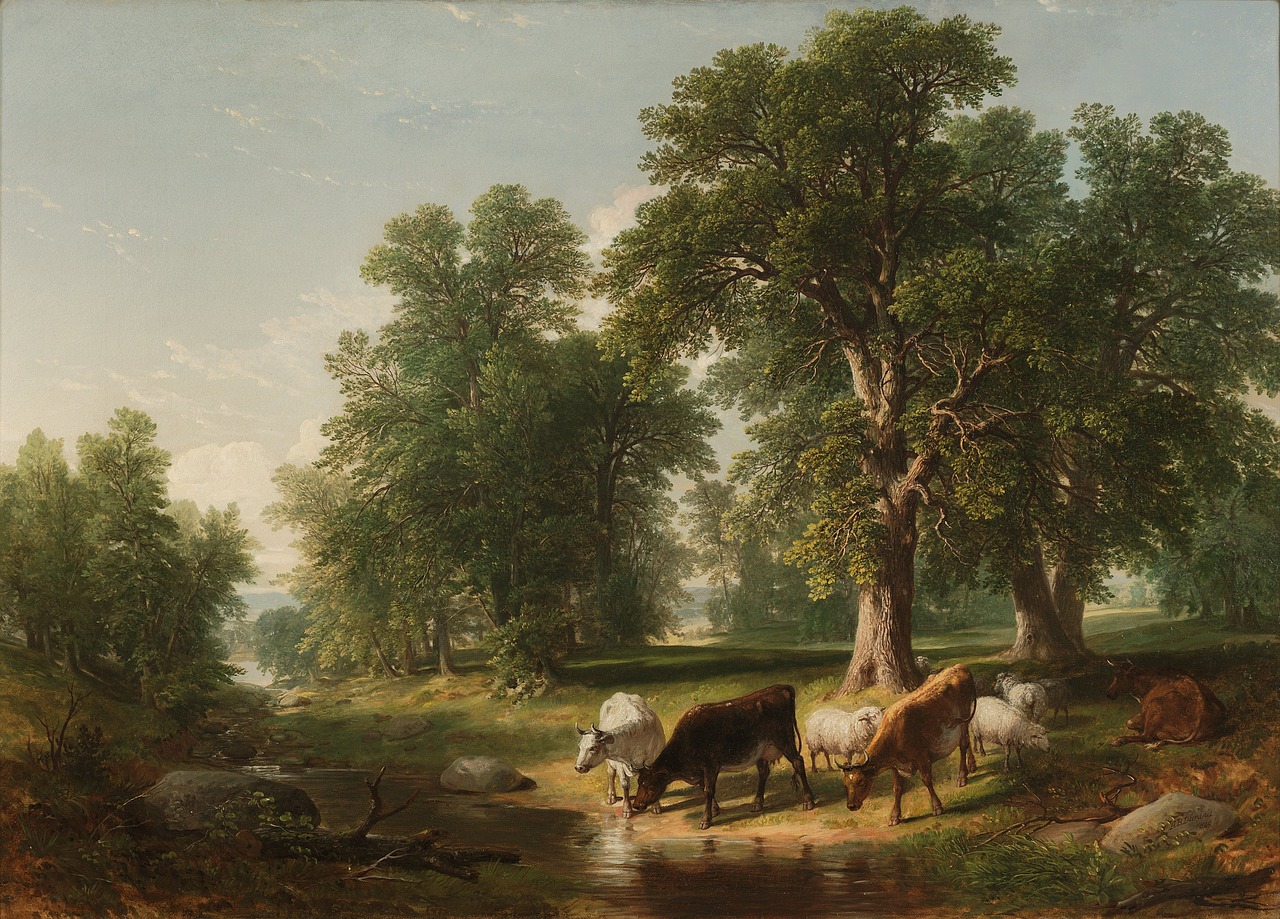
Integrating Painting into Daily Routines
Incorporating painting into your daily routine can be a game changer for your creative flow. You might be wondering, how do I fit painting into a busy schedule? The secret lies in making it a part of your everyday life, just like brushing your teeth or having your morning coffee. Imagine waking up and the first thing you do is grab your paintbrush instead of your phone. Sounds dreamy, right? Well, it’s totally achievable!
Start by identifying small pockets of time throughout your day where you can sneak in a few brush strokes. Maybe it’s during your lunch break, or perhaps you can set aside 15 minutes after dinner. The key is to be intentional about it. Here’s a thought: why not keep your painting supplies handy? Having your materials within reach can serve as a visual reminder to paint whenever you have a spare moment. You could place them on your kitchen table or in a cozy corner of your living room. This way, whenever you pass by, you’ll be tempted to pick up that brush!
Another fantastic way to integrate painting into your daily routine is to pair it with activities you already do. For instance, you could listen to your favorite podcast while painting or enjoy a cup of tea as you work on your canvas. This not only makes the painting process more enjoyable but also helps you associate it with relaxation and fun. Think of it like a mini retreat from the hustle and bustle of life. You can even set a timer and challenge yourself to create something in just a few minutes. This approach can spark creativity and reduce the pressure of needing to create a masterpiece every time.
Furthermore, consider making painting a social activity. Invite friends over for a casual painting night, or join a local art group. Sharing your passion with others can motivate you to paint more regularly and keep you accountable. Plus, it’s a great way to learn new techniques and get inspired by different perspectives. You might even discover that your friends have hidden talents waiting to be unleashed!
Ultimately, the goal is to make painting a habit that feels effortless and enjoyable. By embedding it into your daily routine, you’ll not only find joy in your art but also discover a sense of accomplishment as you watch your skills improve over time. Remember, it’s all about finding what works for you and making those small adjustments that can lead to big changes in your artistic journey.
- How can I find time to paint if I have a busy schedule?
Start by identifying short time slots in your day, such as during breaks or after meals, and gradually build painting into those moments. - What supplies do I need for quick painting sessions?
A basic set of paints, brushes, and a small canvas or sketchbook can suffice. Keep your materials organized and accessible. - Can I really improve my painting skills with just a few minutes a day?
Absolutely! Consistency is key. Even short sessions can lead to significant improvement over time. - Is it better to paint alone or with others?
It depends on your preference! Painting alone can offer solitude and focus, while painting with others can provide motivation and inspiration.
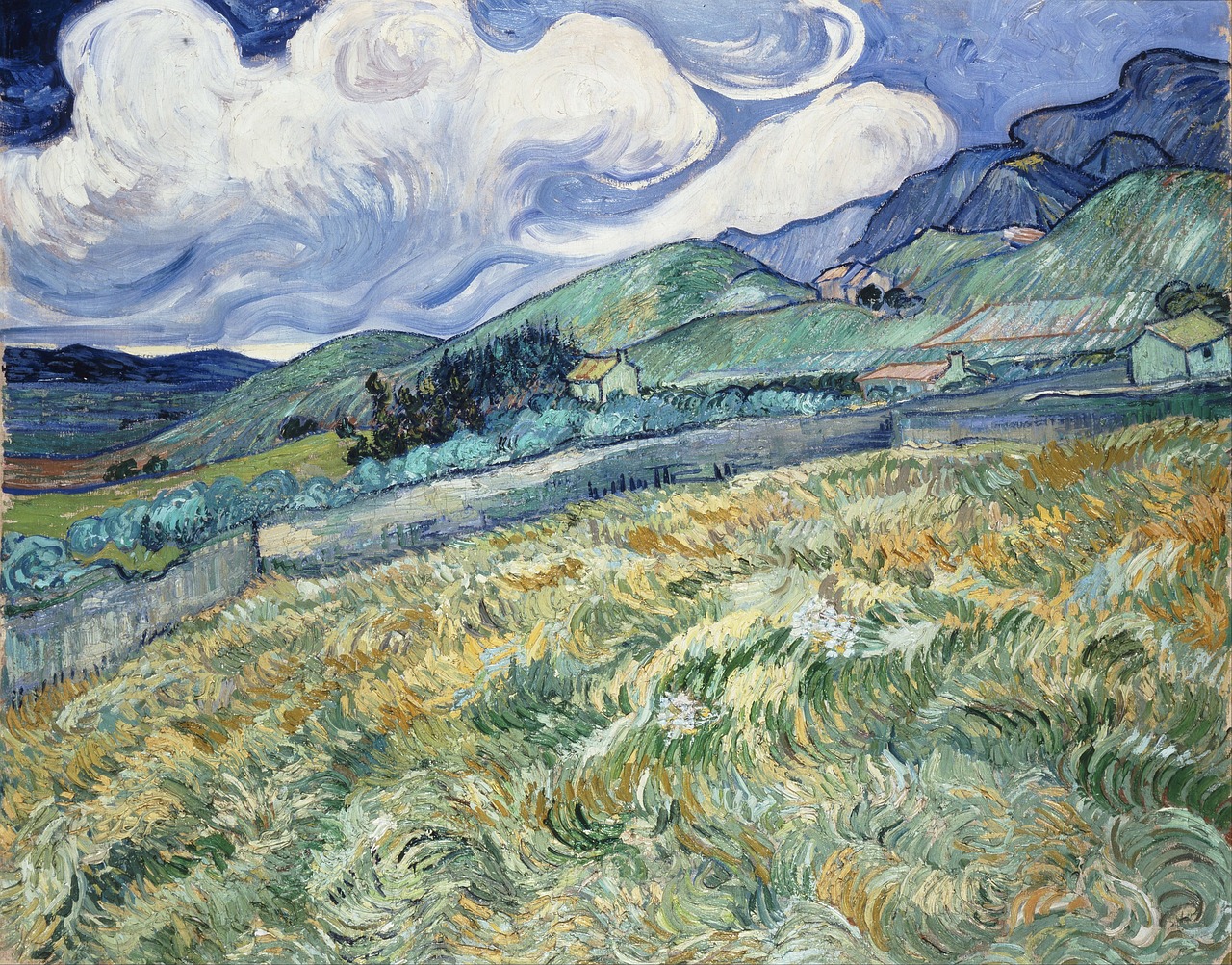
Finding Inspiration
Finding inspiration for your painting can often feel like searching for a needle in a haystack. It's essential to tap into various sources to keep your creative juices flowing and to ensure that your artistic practice remains vibrant and engaging. Inspiration can strike from the most unexpected places, and the key is to stay open and curious about the world around you. Think of inspiration as the wind; sometimes it’s a gentle breeze, and other times it’s a powerful gust that sweeps you off your feet. So, how do you harness this elusive force?
One effective way to spark your creativity is by immersing yourself in nature. The colors, textures, and forms found outdoors can provide a wealth of ideas for your next masterpiece. Whether it’s a walk in the park, a hike in the mountains, or simply observing the changing seasons in your backyard, nature has a way of rejuvenating the artistic spirit. You might find that the vibrant hues of a sunset or the intricate details of a leaf inspire a new color palette or technique in your work.
Art galleries and museums are another fantastic source of inspiration. Viewing the works of established artists can ignite your passion and provide fresh perspectives on your own practice. When you stand before a painting, take a moment to analyze what draws you to it. Is it the brushwork, the composition, or perhaps the emotional impact? Making notes of your observations can help you incorporate similar elements into your own art.
Additionally, the digital world offers a treasure trove of inspiration. Platforms like Instagram, Pinterest, and even YouTube are filled with creative communities sharing their work and processes. Following artists whose styles resonate with you can provide not only inspiration but also valuable techniques and tricks of the trade. The beauty of these platforms is that they allow you to connect with a global audience, broadening your artistic horizons. Here are a few tips to maximize your online inspiration:
- Follow Diverse Artists: Expand your feed with artists from various backgrounds and styles.
- Engage with Your Community: Comment, ask questions, and share your thoughts to foster connections.
- Save and Organize: Use boards or collections to keep track of ideas and inspirations that resonate with you.
Lastly, don’t underestimate the power of everyday life as a source of inspiration. Your surroundings, the people you meet, and even the mundane tasks can spark ideas. Keep a journal or sketchbook handy to jot down thoughts, doodles, or color combinations that come to mind throughout the day. This practice not only captures fleeting ideas but also encourages you to reflect on your experiences and emotions, which can translate beautifully onto the canvas.
In conclusion, finding inspiration is about embracing the world around you and being proactive in your search for creativity. By exploring nature, visiting galleries, engaging with online communities, and observing your daily life, you can cultivate a rich well of ideas to draw from in your painting practice. Remember, inspiration is everywhere; you just need to be willing to look for it!
Q: How can I overcome creative blocks when seeking inspiration?
A: Creative blocks are common among artists. To overcome them, try changing your environment, taking a break, or engaging in different creative activities like drawing or crafting. Sometimes, stepping away from your usual routine can provide a fresh perspective.
Q: What should I do if I feel uninspired after visiting galleries or online platforms?
A: It's perfectly normal to feel uninspired at times. Try to give yourself permission to take a break from creating. Engage in activities that relax you, such as reading or spending time with friends. Inspiration often comes when you least expect it!
Q: How often should I seek new sources of inspiration?
A: Make it a habit to seek new inspiration regularly. This could be weekly or monthly, depending on your schedule. Consistently exposing yourself to new ideas will help keep your creativity alive.

Scheduling Regular Sessions
Committing to a consistent painting schedule can be a game changer for any aspiring artist. Think of it as setting a date with your creativity—one that you simply can't miss! By establishing regular painting sessions, you not only create a routine but also build a relationship with your art. It's like training for a marathon; the more you practice, the stronger you become. So, how do you go about scheduling these sessions?
First off, consider your personal calendar. Are you a morning person or do you thrive in the evening? Align your painting time with when you feel most energized and inspired. For example, if you find that your creative juices flow best after a long day, setting aside a couple of hours in the evening might be ideal. Conversely, if the early morning sun sparks your imagination, why not grab your brushes before the world wakes up?
Next, it's essential to be realistic about your availability. Life can get hectic, and it’s easy to let your painting sessions slide. To combat this, try using a simple table to visualize your painting schedule:
| Day | Time | Duration |
|---|---|---|
| Monday | 7 PM | 2 hours |
| Wednesday | 5 PM | 1.5 hours |
| Saturday | 10 AM | 3 hours |
By mapping out your sessions like this, you can easily see when you have time to paint without feeling overwhelmed. Remember, even if you can only dedicate a small chunk of time, consistency is key. It’s better to paint for 30 minutes a few times a week than to try and cram in a marathon session once a month.
Another effective strategy is to treat your painting sessions like appointments. Set reminders on your phone or use a calendar app to alert you when it’s time to pick up that brush. This not only helps you remember your commitment but also reinforces the importance of your art practice. Think of it as a self-care ritual—one that nourishes your soul and fuels your creativity.
Lastly, don’t forget to be flexible. Life happens, and sometimes your plans may need to shift. If you miss a session, don’t beat yourself up. Instead, reschedule it and make a note of what worked and what didn’t. This adaptability will keep your passion alive and prevent burnout. After all, painting should be a joy, not a chore!
- How often should I schedule my painting sessions? It depends on your availability and personal preference. Aim for at least once a week to maintain a connection with your art.
- What if I don't feel inspired during my scheduled time? That's perfectly normal! Use that time to experiment with new techniques or simply doodle to keep the creative juices flowing.
- Can I paint for shorter periods? Absolutely! Even 15-30 minutes can be beneficial. The key is consistency.

Utilizing Tools and Apps
This article explores effective strategies for incorporating regular painting into your schedule, balancing creativity with daily responsibilities, and ensuring that you make the most of your artistic endeavors.
Establishing specific painting goals can help prioritize your time. These objectives can be short-term or long-term, providing direction and motivation for your painting practice.
A designated painting area can enhance focus and efficiency. This space should be organized and inspiring, making it easier to dive into your creative process whenever time allows.
Identifying and reducing distractions in your painting environment can significantly improve productivity. Techniques like turning off notifications or using noise-canceling headphones can help maintain concentration.
Implementing time blocks for painting sessions can help structure your day. This method involves allocating specific periods solely for painting, ensuring consistent practice without interruptions.
Incorporating painting into your daily routine can make it a habit. Consider painting during breaks or setting aside time in the evening to unwind with your art.
Regularly seeking inspiration can rejuvenate your painting practice. Explore various sources, such as nature, art galleries, or online platforms, to keep your creativity flowing.
Committing to a painting schedule can help ensure consistency. Whether it's weekly or bi-weekly, having regular sessions allows you to track progress and stay engaged with your art.
In today's fast-paced world, utilizing tools and apps can significantly enhance your painting practice and time management. Imagine having a personal assistant that keeps your creative schedule organized! There are numerous applications designed specifically for artists that can help you plan your painting sessions, set reminders, and even track your progress.
For instance, you might find it beneficial to use calendar applications like Google Calendar or Apple Calendar. These platforms allow you to block out specific times for painting, ensuring that you dedicate uninterrupted moments to your craft. Additionally, you can set reminders that ping you when it's time to switch gears and get creative.
Another category of tools includes project management apps such as Trello or Asana. These are not just for business; they can be tailored for your artistic projects too! You can create boards for different painting ideas, track your materials, and even jot down inspirations as they come to you. This way, you won't lose that spark of creativity when it strikes!
Furthermore, there are specialized apps like Procreate for digital painting or ArtFlow that allow you to paint on the go. These tools can turn your smartphone or tablet into a portable studio, making it easier to paint whenever inspiration hits—whether you're waiting for a coffee or lounging in the park.
To help you navigate the world of digital tools, here's a simple table that outlines some popular options:
| Tool/App | Purpose | Platform |
|---|---|---|
| Google Calendar | Schedule painting sessions | Web, iOS, Android |
| Trello | Project management for art projects | Web, iOS, Android |
| Procreate | Digital painting | iOS |
| ArtFlow | Digital painting | Android |
By integrating these tools into your routine, you can streamline your painting process and make the most of your time. The key is to find what works best for you and your unique style. So, why not give them a try? You might just find that painting becomes an even more enjoyable part of your day!
Taking time to reflect on your painting journey can provide insight into your growth. Regularly assessing your work can help identify areas for improvement and motivate continued practice.
- How can I find time to paint with a busy schedule? Consider setting specific time blocks and integrating painting into your daily routine.
- What tools are best for managing my painting schedule? Apps like Google Calendar and Trello can help you stay organized and focused on your goals.
- How can I stay inspired to paint regularly? Seek inspiration from various sources, including nature, art galleries, and online platforms.

Reflecting on Progress
Reflecting on your artistic journey is like looking in a mirror that shows not just your face, but your growth, struggles, and triumphs as a painter. It’s essential to take a step back and evaluate your work periodically. This practice can illuminate how far you've come and what areas require more attention. Just like any other skill, painting thrives on feedback—both from yourself and others. Have you ever noticed how a simple reflection can spark new ideas or even ignite a passion that you thought was lost? That's the magic of self-reflection in art.
To effectively reflect on your progress, consider creating a personal art journal. This journal can serve multiple purposes: documenting your thoughts, sketching ideas, and noting the techniques you've learned. Here’s how you can structure it:
| Date | Artwork Title | Techniques Used | Reflection |
|---|---|---|---|
| 01/01/2023 | Sunset Bliss | Watercolor blending | Felt more confident with color transitions. |
| 01/15/2023 | Abstract Dreams | Acrylic pouring | Need to work on controlling the flow of paint. |
In this journal, you can jot down not only the technical aspects of your paintings but also your emotional responses to them. Ask yourself questions like, "What did I enjoy about this piece?" or "What would I change if I could?" These reflections can serve as a compass, guiding your future projects and helping you stay motivated.
Moreover, sharing your work with fellow artists or friends can provide invaluable feedback. Engaging in discussions about your paintings can open up new perspectives and ideas that you might not have considered. Think of it as a collaborative effort where you can learn from each other’s experiences. Here are a few ways to gather feedback:
- Join local art groups or online forums.
- Participate in art critiques.
- Set up a small exhibition of your work for friends and family.
Lastly, don’t forget that progress isn’t always linear. Some days you’ll feel like a master artist, while others may leave you frustrated. Embracing this ebb and flow is crucial. Remember, every brushstroke, every color choice, and every moment spent in front of the canvas contributes to your unique artistic voice. So, take a moment to celebrate your progress, no matter how small it may seem. After all, every masterpiece starts with a single stroke!
Q1: How often should I reflect on my painting progress?
A1: It’s beneficial to reflect after completing each piece or at regular intervals, such as monthly or quarterly. This helps maintain a clear perspective on your growth.
Q2: What should I do if I don't like my progress?
A2: It’s normal to feel dissatisfied at times. Use this as motivation to identify specific areas for improvement and set new goals.
Q3: Can I reflect on my progress without a journal?
A3: Absolutely! You can reflect verbally with friends, record voice memos, or even create video diaries to capture your thoughts.
Frequently Asked Questions
- How can I set clear painting goals?
Setting clear painting goals starts with defining what you want to achieve. Are you aiming to complete a specific number of paintings in a month or improve your technique in a particular style? Write down your goals, both short-term and long-term, and keep them visible to stay motivated.
- What should I consider when creating a dedicated painting space?
Your painting space should be a haven for creativity. Choose a spot that inspires you, has good lighting, and is free from clutter. Organize your materials so that everything you need is within reach, allowing you to dive into your artwork without wasting time searching for supplies.
- How can I minimize distractions while painting?
To minimize distractions, identify what typically pulls your attention away. This might mean turning off your phone notifications, using noise-canceling headphones, or even setting boundaries with family or roommates during your painting time. Creating a focused environment can significantly boost your productivity.
- What are time blocks, and how do I use them for painting?
Time blocks are dedicated periods set aside for specific activities, like painting. For example, you might allocate two hours every Saturday morning just for your art. This structured approach helps you prioritize painting in your schedule and ensures you have uninterrupted time to focus on your creativity.
- How can I integrate painting into my daily routine?
Integrating painting into your daily routine can be as simple as setting aside 15 minutes during your lunch break or winding down with a quick sketch in the evening. The key is to make it a consistent part of your day, turning it into a habit that you look forward to.
- Where can I find inspiration for my paintings?
Inspiration can come from everywhere! Explore nature, visit local art galleries, or browse online platforms like Pinterest or Instagram. Keeping an inspiration journal can also help you capture ideas and references that spark your creativity.
- How often should I schedule painting sessions?
Scheduling regular painting sessions depends on your availability and goals. Whether you choose to paint weekly or bi-weekly, consistency is vital. Regular sessions allow you to track your progress and stay engaged with your art, making it easier to develop your skills over time.
- What tools or apps can help with time management for painting?
There are several tools and apps designed to help manage your time effectively. Consider using digital calendars, reminder apps, or project management tools like Trello to keep your painting goals organized and on track. These resources can help you stay committed to your artistic journey.
- Why is it important to reflect on my painting progress?
Reflecting on your painting progress is crucial for growth. It allows you to assess what techniques are working, what areas need improvement, and how your style is evolving. Regular reflection can motivate you to keep practicing and pushing your artistic boundaries.



















